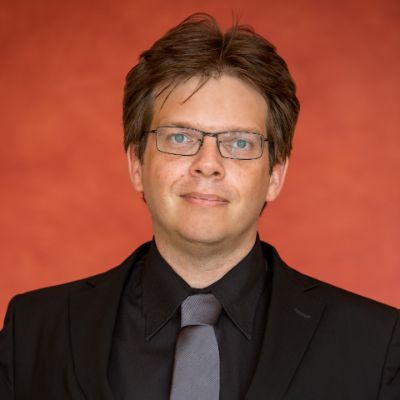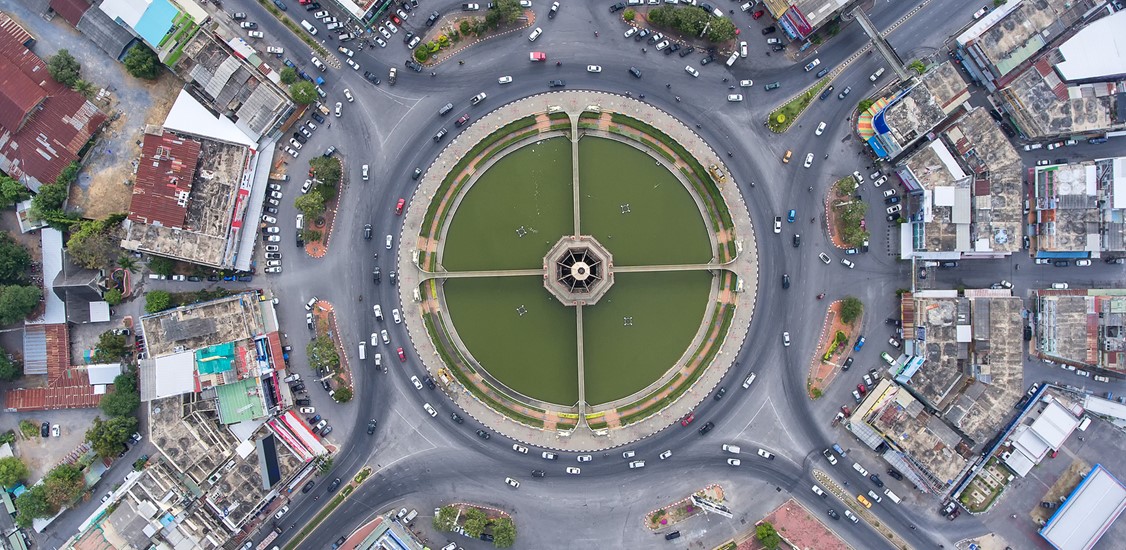In October last year, Nokia launched its Broadband Zero strategy, addressing a range of issues from connectivity to sustainability. The portfolio strategy comprises 4 major tenets - ‘Zero Left Behind’, ‘Zero Limits’, ‘Zero Touch’ and ‘Zero Waste’ with each focusing on a set of initiatives laid forward by the company as part of its response to the increasing relevance and importance of the telecoms industry in the aftermath of the pandemic. In an interview with Tara Neal, Executive Editor of The Fast Mode, Stefaan Vanhastel, CTO of Fixed Networks at Nokia explains the strategy and the goals behind this vision and the milestones that have been achieved since its launch.
Tara: Can you tell us more about Nokia’s Broadband Zero strategy, and how it addresses networks and data connectivity in a post-pandemic world?
 Stefaan Vanhastel
Stefaan VanhastelCTO of Fixed Networks at Nokia
Stefaan: Our aim, as an industry and as a society, is to bring connectivity to everyone, to ensure everyone enjoys the benefits of broadband and to bridge the digital divide. While no one can refute the benefits of the virtual world, delivering equitable and ubiquitous connectivity can be a daunting task as it involves a number of major challenges. Broadband Zero is Nokia’s fixed networks portfolio strategy that is aimed at addressing and overcoming each of these challenges.
Broadband Zero is defined by four main pillars and the first and foremost among them is ‘Zero Left Behind’. It focuses on ensuring that everyone has access to broadband connectivity and enjoys the minimum speeds required to benefit from the Internet. The second pillar is Zero Limits, which is about maximizing the services and revenue streams derived from investments in this space, be it the last mile fiber, fixed wireless access (FWA) or home CPEs. The third is Zero Touch, which addresses the complexities brought about by different access technologies, via simplification and automation and which essentially relates to the move to the Cloud, virtualization, SDN and programmability. The last pillar, which has grown in prominence over recent years, is Zero Waste. Zero Waste looks at a range of initiatives aimed at reducing the environmental impact of the industry, in terms of waste control and reducing the CO2 footprint.
 The four tenets of Nokia’s Broadband Zero
The four tenets of Nokia’s Broadband Zero
Tara: Nokia’s ‘Zero Left Behind’ idea propagates the idea of ubiquitous, seamless connectivity. In terms of technology, how is 5G FWA expected to drive this, and what are some of Nokia’s immediate plans in this space?
Stefaan: A key takeaway from the industry, in the last 20 or 30 years, is that there is never a ‘magic bullet’ solution in terms of one technology that befits every deployment. From what we have observed from our customers, the norm is to combine various solutions and multiple technologies. To this end, most if not all converged operators turn to fiber as their long-term strategy as it is future-proof and highly efficient in transmitting massive amounts of data to homes. However, upgrading legacy DSL and cable networks to fiber involves many challenges, and thus operators are seeking ways to optimize their existing infrastructure to better meet consumer demands. Converged operators are shifting their focus to FWA as a technology that is capable of connecting remote and rural areas where fiber remains unviable. FWA is also a great use case for greenfield deployments involving areas which are yet to be connected with fiber, as well as for mobile operators looking to add a fixed broadband revenue stream to their radio network.
Compared to its predecessor 4G FWA, 5G FWA is capable of offering a fiber-like service, leveraging the sub-six gigahertz spectrum and existing radio cells. Sub-six gigahertz spectrum delivers high speeds, long reach and can better penetrate through buildings. mmWave spectrum brings much higher capacity to the table but it comes with its own challenges, typically requiring radio network densification and expensive professional installation of FWA CPE to ensure that sensitive signals reach the device. Nokia has developed and trialed innovative CPE designs that combine very high gain antennas, analytics and automation to make indoor self-installation of mmWave services possible. We expect commercial deployments of this type of technology to start in the next couple of years.
 Nokia’s FastMile 5G FWA solution
Nokia’s FastMile 5G FWA solution
Nokia’s FWA CPEs, and indeed all our WiFi Beacons, also address another key aspect of ‘Zero Left Behind’ which involves bringing broadband speeds to every room and every device in the home. By combining wireless mesh with next generation Wi-Fi technologies such as Wi-Fi 6, our FWA CPEs are able to circumvent bottleneck issues inherent in current Wi-Fi networks. This is another area that Nokia has been investing in, as part of the challenge to connect everyone and everything.
Tara: Nokia’s application containers unveiled in October last year promise richer CPE functionalities. Can you share how this delivers the Zero Limits vision? How does it enhance CSP monetization and what opportunities does it present to application developers?
Stefaan: The first angle under ‘Zero Limits’ revolves around new capabilities that can be added to the CPE and the revenue streams these can bring. One approach to this is the use of containers which enable operators as well as third-parties to run a plethora of applications without compromising the security or the stability of the device. This paves way for various use cases, from straightforward security applications such as firewalls and parental controls to extending the enterprise network to the home via an SD WAN or VPN client on the CPE, with specific SLAs and quality of service guarantees from the operator. Nokia is also exploring ways to extend network slicing to the home which allows the provisioning of application-aware slices, for example the delivery of a low-latency, high bandwidth slice for a gaming service.
 Nokia’s WiFi beacon
Nokia’s WiFi beacon
The CPE can in fact, mimic a mini data center, allowing applications to be deployed close to the end user. A firewall in the CPE for example, can prevent a compromised home device from participating in a botnet and launching a denial of service attack on the rest of the network. It presents a new paradigm in the trend towards the Cloud and the edge, with a tiny part of the Cloud – nano Cloud – now being moved to the customer’s home.
The second angle for Zero Limits centers on the monetization of operator fiber investments. This involves drawing on fiber that is installed for residential broadband for non-residential use cases and applications and for adding new services. With fiber speeds surpassing 10 gigabits per second to reach 25 gigabits and even 100 gigabits, existing fiber can be used to connect businesses to multi-gig services. The same fiber infrastructure can also be utilized for backhauling and fronthauling 5G small cells.
 The transition to 25 Gbps
The transition to 25 Gbps
Tara: Network automation is at the center of Nokia’s ‘Zero Touch’ idea. Can you share with us how networks are transitioning to become fully automated, and the developments in the underlying technologies that are making this possible?
Stefaan: Abstraction of technology and hardware is key to addressing the complexities of today’s networks, specifically those that are related to the use of multiple technologies. Virtualization enables this, promising openness via open source modules and components, open interfaces and open data models, where solutions are standardized across different vendors and technologies. Virtualization also promises programmability, where the underlying hardware can be reconfigured, in real-time, to undertake different tasks.
With open interfaces and standardized data models, network managers have ready access to vast amounts of network data. Coupled with cloud deployment, virtualization enhances scalability via readily available computing power. The move to the cloud also enhances network intelligence, allowing operators to introduce additional software or integrate third-party software modules to automate network monitoring, analysis and responses.
 Zero Touch
Zero Touch
Similar advancements are also taking place in the hardware space where we are combining purpose-built hardware, optimized for performance and power consumption, with the benefits of the Cloud, namely automation, programmability, scalability and openness. Nokia embarked on this as early as 2017, and today, we have the portfolio in place. We recognize that switching from monolithic hardware and vendor proprietary software to open architectures with open software and disaggregated hardware may not happen overnight, but the shift has begun.
These developments are enabling various use cases in network management. Among them is predictive care which allows operators to analyze the network and identify trends across a wide range of device attributes including average temperature, lightning strike data, age of equipment and spikes on the power networks. We are now able to predict about one third of failures which leads to a massive improvement in network downtimes and customer experience. Additionally, we have also introduced ‘intents’ which involves the network automatically configuring the underlying technologies – fiber, G.fast or FWA – to meet pre-specified objectives in terms of speeds and other performance attributes. This level of automated abstraction simplifies the process of adding new services and technologies, and marks an extremely powerful and yet completely new way of building and operating a network.
Tara: The last tenet of Broadband Zero, which is ‘Zero Waste’ addresses environmental concerns relating to CO2 emissions and industrial waste. As a key player in the ICT space, how is Nokia leading the way towards environmental sustainability?
Stefaan: According to the European Commission, the broadband and ICT sector represents about 2% of global CO2 emissions. At the same time, the sector has a positive impact on about 15% of the total CO2 emissions in other industries such as transportation and energy, via for example, smart metering and smart energy.
While we continue to deliver a positive impact on other industries, we can focus on reducing our own CO2 footprint. A major leap in this is the introduction of Quillion, Nokia’s new generation of chipsets which realize about a 50% reduction in power consumption compared to the previous generation. Apart from this, the transitioning of DSL and cable networks to fiber as part of network modernization delivers another milestone in energy consumption due to the modern equipment used and the inherent efficiencies of fiber as a medium for transmitting data. A key highlight in achieving this, specifically in reducing power per subscriber is that we are able to do so while improving speeds.
 Easily recyclable CPEs
Easily recyclable CPEs
 Eco-packaging
Eco-packaging
Apart from power consumption, Nokia is also enhancing its designs for recycling across devices such as CPEs, fiber ONTs and Wi-Fi beacons. Nokia’s latest generation of CPEs for example, feature only four components, i.e., an outer shell, an inner framework, a PCB and external connectors which can be assembled and disassembled with ease, with each component separately recyclable. Nokia is also switching to eco-packaging where sensitive electronics which were previously shipped using foam now use 100% paper and cardboard which are fully recyclable. While retaining its quality of protection, the new packaging takes up less space, leading to a lower number of shipments. In this case, it is interesting how a fairly small change can produce wide reaching ripple effects in different areas.
Learn more about Nokia’s Broadband Zero vision and the on-going initiatives in this space in the following blog posts by Federico Guillén and Sandy Motley of Nokia.





















